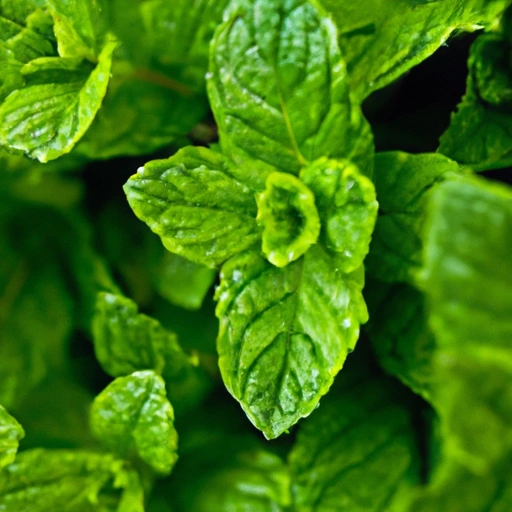Mint
Description

Mint is a fragrant, versatile herb known for its distinctive aroma and cool, refreshing taste. It is widely used in culinary applications, both fresh and dried, and is equally celebrated for its potential health benefits. Mint leaves come from the genus Mentha, which comprises several species including peppermint and spearmint, the most commonly used varieties.
Common uses
Mint leaves are often used as a garnish or flavoring agent in a variety of dishes, drinks, and products, such as toothpaste and chewing gum. Its essential oil is also extracted for use in food, cosmetics, and therapeutic applications.
Nutritional value
Calories
Fresh mint contains approximately 5-10 calories per 2 tablespoons (about 5.6 grams or 0.2 ounces).
Protein
Mint provides about 0.2 grams of protein per 2 tablespoons.
Fat
There is a negligible amount of fat in mint, typically less than 0.1 grams per serving.
Carbohydrates
Carbohydrates in mint amount to roughly 1 gram per 2 tablespoons.
Vitamins
Mint is a good source of Vitamin A and contains various B vitamins in smaller amounts.
Minerals
The herb is rich in minerals such as potassium, magnesium, calcium, phosphorus, and iron.
Health benefits
Mint is associated with several health benefits, including improved digestion, relief from nausea, and enhanced mental alertness. It may also have anti-inflammatory properties and the potential to alleviate symptoms of the common cold and allergies.
Potential risks
While mint is generally safe for consumption, it can cause adverse reactions in some individuals. People with gastroesophageal reflux disease (GERD) may experience worsening symptoms, and those with a mint allergy should avoid it altogether.
Common recipes
Mint is featured in a wide array of recipes, from the refreshing mojito cocktail and traditional mint sauce to the classic Middle Eastern tabbouleh and Indian chutneys.
Cooking methods
The leaves can be used whole, chopped, or infused into liquids. Mint is suitable for both raw preparations and various cooking methods, including boiling, baking, and steeping in hot water for tea.
Pairing with other ingredients
Mint pairs well with fruits like berries and melon, complements chocolate and other sweet flavors, and adds a fresh dimension to meats such as lamb and poultry.
Summary
Mint is a globally beloved herb that adds a burst of freshness to any dish or drink. Its ease of use, combined with its nutritional benefits and potential to improve health, makes it a staple in many kitchens around the world. Whether used in its fresh form or as dried leaves, mint's invigorating flavor is sure to transform any culinary creation.